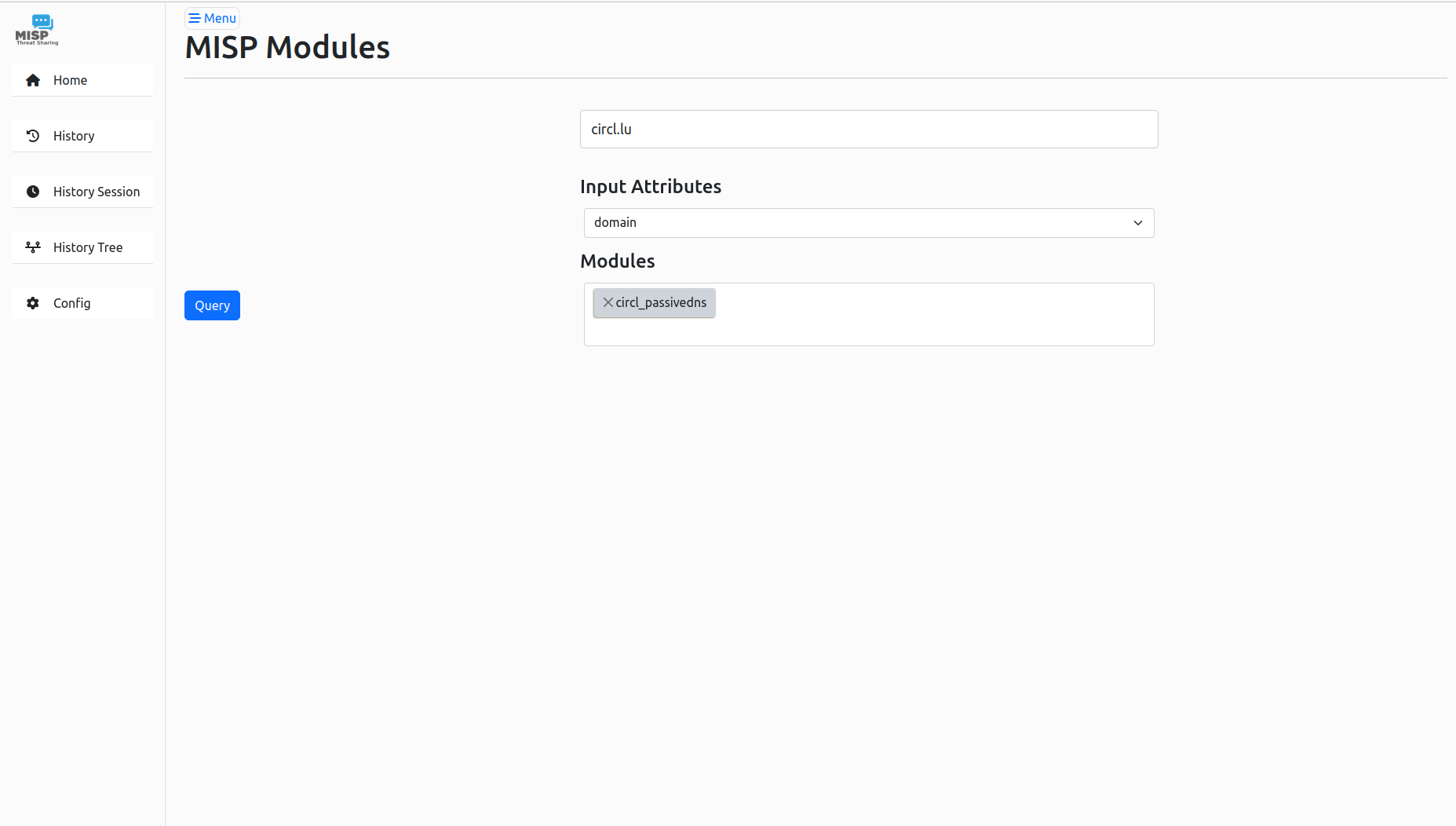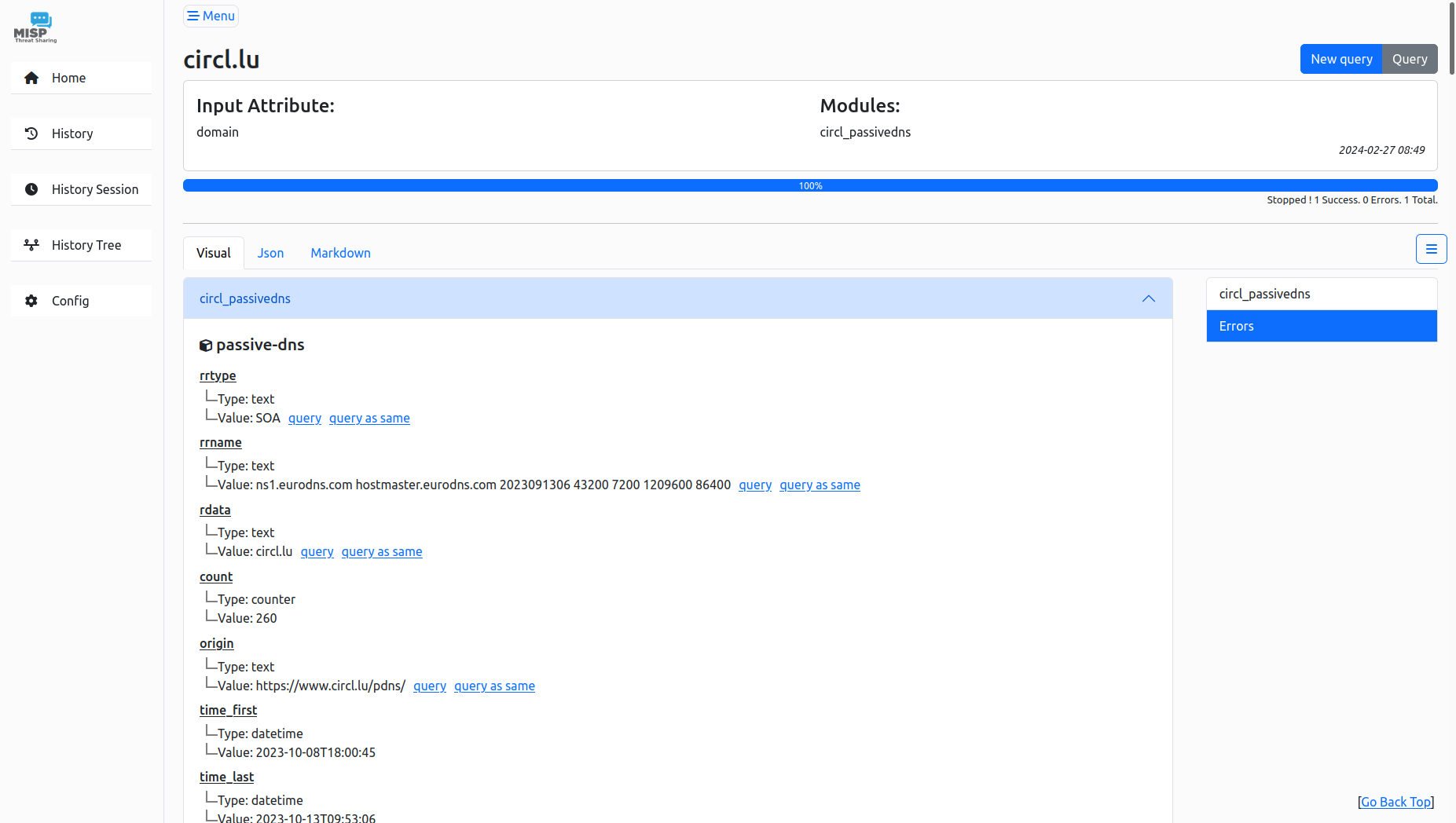|
|
||
|---|---|---|
| .. | ||
| app | ||
| conf | ||
| doc | ||
| migrations | ||
| README.md | ||
| app.py | ||
| launch.sh | ||
| migrate.sh | ||
| pyproject.toml | ||
| requirements.txt | ||
README.md
MISP-module website
Use all modules with a dedicate website without any MISP
Installation
It is strongly recommended to use a virtual environment
If you want to know more about virtual environments, python has you covered
sudo apt-get install screen -y
pip install -r requirements.txt
git submodule init && git submodule update ## Initialize misp-objects submodule
python3 app.py -i ## Initialize db
Don't forget to install misp-modules...
Config
Edit config.py
-
SECRET_KEY: Secret key for the app -
FLASK_URL: url for the instance -
FLASK_PORT: port for the instance -
MISP_MODULE: url and port where misp-module is running -
ADMIN_USER: If True, config page will not be accessible -
ADMIN_PASSWORD: Password for Admin user ifADMIN_USERis True
Rename config.cfg.sample to config.cfg then edit it:
-
ADMIN_USER: If True, config page will not be accessible -
ADMIN_PASSWORD: Password for Admin user ifADMIN_USERis True
Launch
./launch.sh -l
Admin user
If admin user is active, type /login in url to access a login page and type the password wrote in config.py in ADMIN_PASSOWRD.

